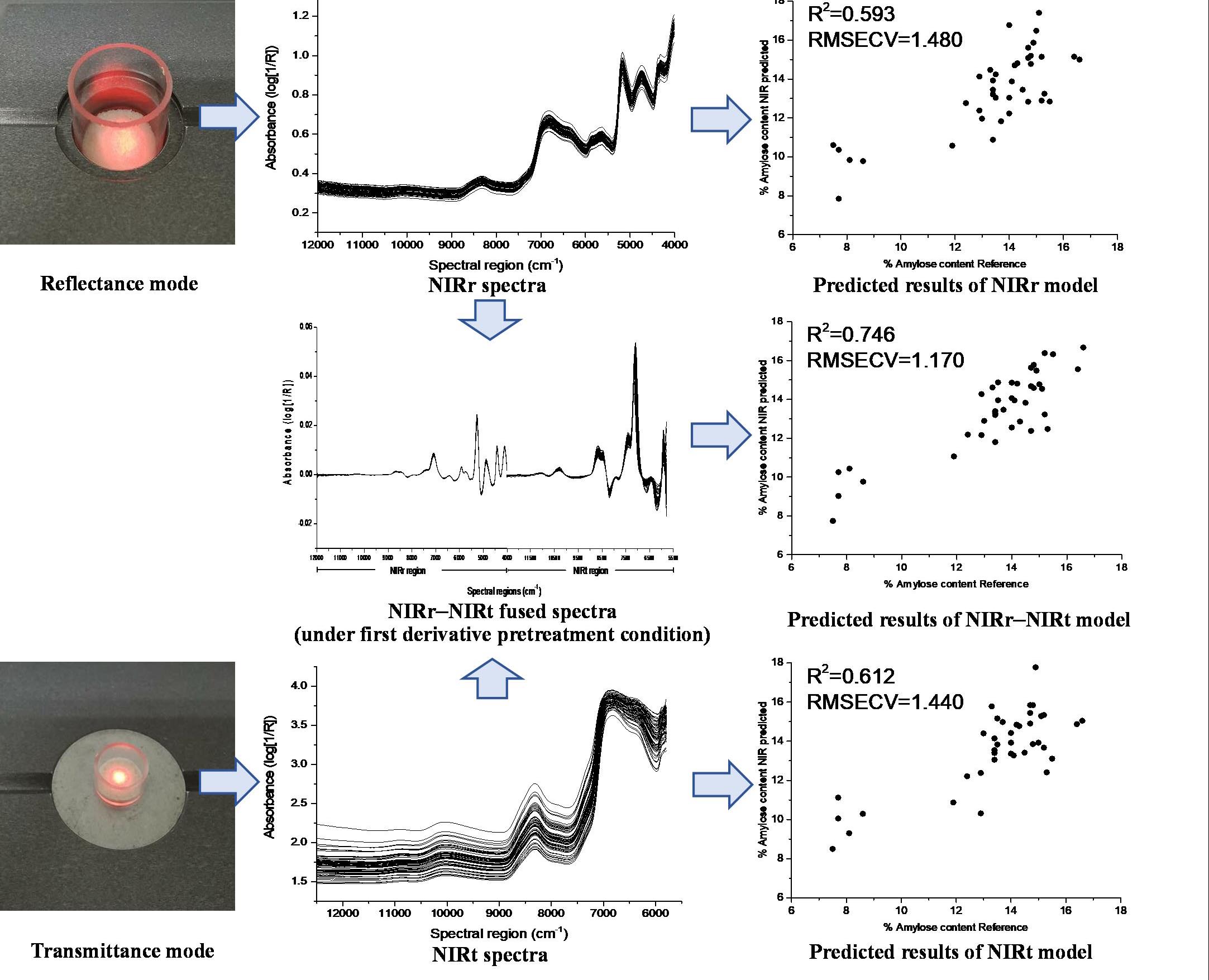
Based on near-infrared spectroscopy (NIRS) and data fusion technology, researchers proposed a novel analytical method, through which the accuracy of the spectrometric method for detecting the quality of agricultural products.
This study, published on Analytica Chimica Acta, was conducted by a research team led by Prof. WU Yuejin from the Hefei Institutes of Physical Science (HFIPS) of the Chinese Academy of Sciences.
NIRS is a rapid and non-destructive spectroscopic analytical technique that can play an important role in the fields of food production and crop breeding. Data fusion technology is a framework containing methods and tools to combine data from different sources, which has received a lot of attention in recent years.
According to Prof. WU, this new method was developed based on the fusion of the near-infrared spectral signals measured in two different modes, namely diffuse reflectance (NIRr) spectra and diffuse transmission (NIRt) spectra.
The researchers assumed that the NIRr and NIRt spectra of the same set of samples are complementary, so the fusion of the two types of spectral signals can provide more complete sample information.
By analyzing the NIRr and NIRt spectra of three groups of rice flour samples and selecting appropriate chemometric algorithms to extract and integrate the complementary information, the researchers established multiple calibration models to achieve more accurate predictions of three main components (including amylose, protein, and fat content) of rice flour.
This method could help seed breeders select high-quality rice varieties and help grain producers produce better-quality rice more effectively. It could also be applied to quality detection of other products in the future.
The study was supported by the National Natural Science Foundation of China, the Anhui Provincial Key Research and Development Program, and the Anhui Science and Technology Major Project.

Schematic diagram of the method based on the data fusion of near-infrared diffuse reflectance and diffuse transmission spectra for the detection of rice flour amylose content. (Image by XU Zhuopin)

86-10-68597521 (day)
86-10-68597289 (night)

52 Sanlihe Rd., Xicheng District,
Beijing, China (100864)

